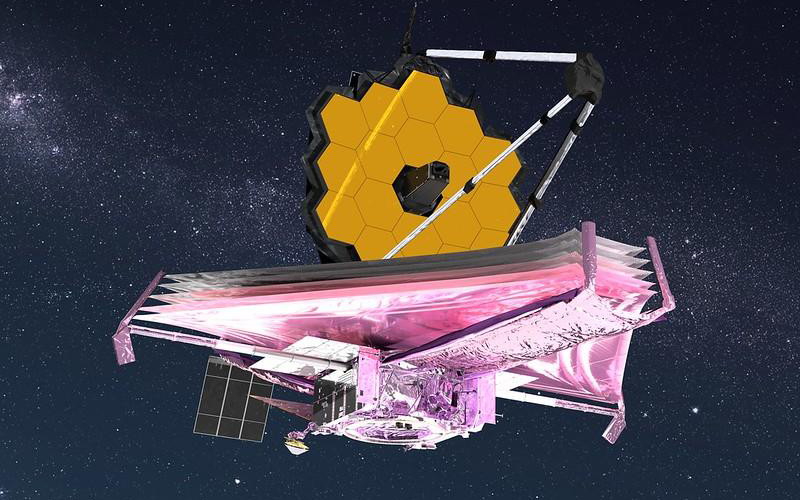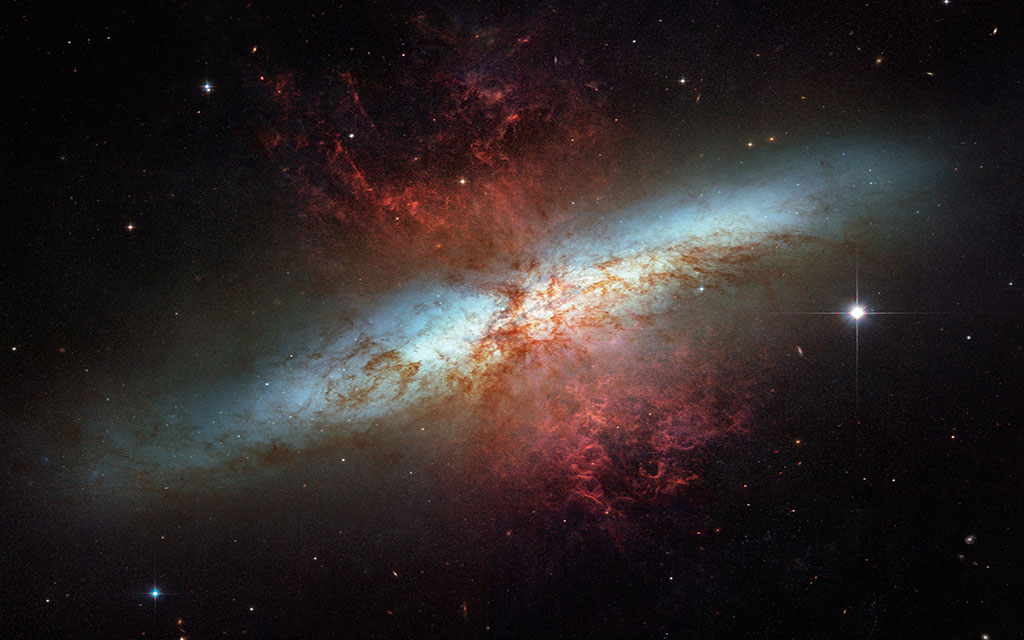
Artist conception of the James Webb Space Telescope. A shield the size of a tennis court will keep the extremely sensitive infrared detection instruments out of the sun’s direct rays. (Photo courtesy of NASA GSFC/CIL/Adriana Manrique Gutierrez)
The Hubble Space Telescope answered key questions about the cosmos, but its data also inspired new theories about the origins of the universe that can’t be confirmed without even more powerful instruments.
On Dec. 18, an international partnership will launch the James Webb Space Telescope, a new cluster of instruments that will make the Hubble look myopic by comparison.
“It can be used for many projects, including looking at the atmospheres of planets orbiting other stars — exoplanets,” said University of Arizona astronomer Marcia Rieke, who co-leads the team behind the craft’s Near-Infrared Camera, known as NIRCam.
Telescopes are time machines: The light striking their sensors brings images of a universe long past.
The Webb’s powerful infrared sensors will peer back to about 100 to 250 million years after the Big Bang and witness the births of the very first galaxies.
By comparison, the Hubble could see the earliest modern galaxies, and made observations chiefly in the visible spectrum, along with a small bandwidth of near infrared.
Being able to see into the infrared is essential for observing the early universe. The expansion of the universe stretches, or shifts, light from distant objects toward the longer wavelengths of the red end of the spectrum. The further back scientists look, the more redshifted that light becomes, until finally it falls off the visible spectrum entirely and lands in the infrared.
Infrared also lets NIRCam see through dust clouds that are opaque at other wavelengths to observe stars in nebular nurseries.
The Webb’s instruments also will observe planets and moons closer to home.
“They will give us images that will rival what we’ve seen from the Voyager flybys” of Saturn and other distant planets, Rieke said. But, being able to do it in the infrared, we’ll be able to trace out some of the molecules and those planets’ atmospheres, things like methane.”
Her husband, George Rieke, also a UA astronomer, co-leads the telescope’s Mid-Infrared Instrument team.
“Getting into space is critical for infrared astronomy,” George Rieke said in a statement, noting that although infrared observations can be made with ground-based telescopes, those efforts are plagued by heat “noise” coming from the instrument and the atmosphere.
“Astronomical sources have to be detected against this overwhelming and highly variable foreground, so it’s a bit like trying to find a match in a blast furnace,” he said.
The Webb also includes spectroscopic instruments for analyzing elemental compositions, including the constituents of exoplanet atmospheres.
After it launches from Kourou, French Guiana, aboard a European Space Agency Ariane 5 rocket, the Webb will then embark on a month-long flight to the L2 Lagrange point — an area where the sun’s and Earth’s gravities balance the centripetal force needed for the craft to move with them.
Because its 270-square-foot primary mirror — the largest ever flown into space — is too wide to fit the rocket’s fairing, it’s broken into 18 hinged hexagons that will unfold in space over a span of two weeks.
It will then spend around half a year going through a commissioning and calibration process before it can beam data to scientists back home.
“At a time when infrared astronomy was widely dismissed as being too difficult, they insisted on pushing the technology,” UArizona President Robert C. Robbins said in a statement of the Riekes. “Driven by the discoveries they foresaw, they kept chipping away at the challenges, and in the process, they helped establish infrared astronomy – one of astronomy’s most fruitful subdisciplines – right here in Tucson.”
Cronkite News contributed to this story.
